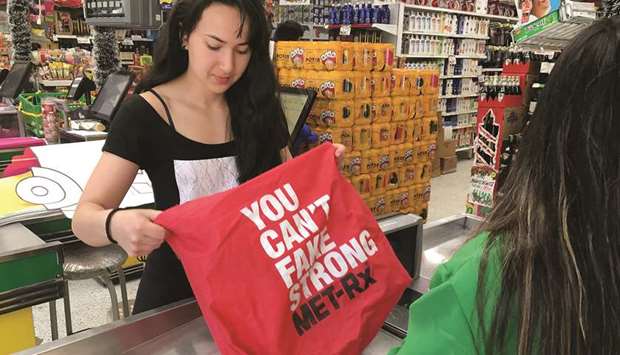Something intriguing has been happening in Colombia’s supermarkets. Where it was once normal to see people filing out with their hands full of plastic bags, the sight is now becoming increasingly unusual.
Colombians can now often be seen shopping with canvas bags sold by supermarkets, as well as baskets and wheeled shopping bags.
In a country that is not famous for its high level of environmental awareness, it looks as though an ongoing governmental campaign against plastic bags is starting to change mentalities.
Supermarkets now charge 20 pesos (0.01 dollars) per plastic bag, and the price will increase by 10 pesos annually until it reaches 50 pesos.
“I think having to pay for the plastic bags is a good thing, because the financial sacrifice forces people to be more conscious of the need to protect the environment,” says Eliana, a secretary.
“I used to take different plastic bags for toiletries, foodstuffs, sweets and kitchen products. With this new practice, one realises that not so many bags are needed,” adds Teresa Avendano, 52.
“Since they started making us pay for the bags, we no longer use so many. I bought a cloth bag and use it every time I go shopping,” she says.
The number of plastic bags circulating in Colombia has dropped by 10 per cent since the government started obliging consumers to pay for the bags in July, according to officials.
During the previous six months, plastic bag producers had already started making bigger and stronger bags, encouraging consumers to use fewer of them for longer. The amount of plastic used by the producers went down by 27 per cent. “We have seen ... a change in consumer habits with campaigns ... which undoubtedly have a very positive impact,” Environment Minister Luis Gilberto Murillo said.
But not everyone is happy with the measure, with some consumers complaining that shopkeepers overcharge for the bags. The change has also led to a 27-per-cent fall in the sales of plastic bag makers.
They are, however, adapting to the situation and following new rules requiring them to use recyclable materials and to print environmental messages on the bags, according to the Colombian Chamber of Plastic, which represents more than 80 plastic bag producers.
The bags may also no longer measure less than 30 centimetres in length, the government ordered in December 2016 in an attempt to reduce their number.
The Environment Ministry and the World Wide Fund for Nature estimate that every Colombian used an average of 288 plastic bags in 2016.
The government is aiming for a 5-per-cent annual reduction in plastic bag usage until it has fallen 60 per cent, according to Carlos Jairo Ramirez, who co-ordinates sustainability projects at the Environment Ministry.
Many Latin American municipalities have launched initiatives to reduce the use of plastic bags, but Colombia’s national reduction of 10 per cent – amounting to more than 58 million bags – is considered a significant achievement.
“Still more is needed, because Colombia does not have a high level of environmental consciousness,” says Juan Guillermo, an engineer who works with renewable energies.
About 100 million barrels of petrol are used to make the more than a trillion plastic bags globally every year, according to Ramirez.
“To make 14 bags, you need about the same amount of fuel that a car needs for a drive of 1.6 kilometres,” the official pointed out.
Some eight million tonnes of plastic are poured into the seas annually, according to the United Nations – a heavy load for the environment which Colombia, for its part, is now trying to reduce. – DPA

CHANGE: A campaign to curb the use of plastic bags in Colombia has seen widespread success, with many consumers switching to canvas bags like this one.
